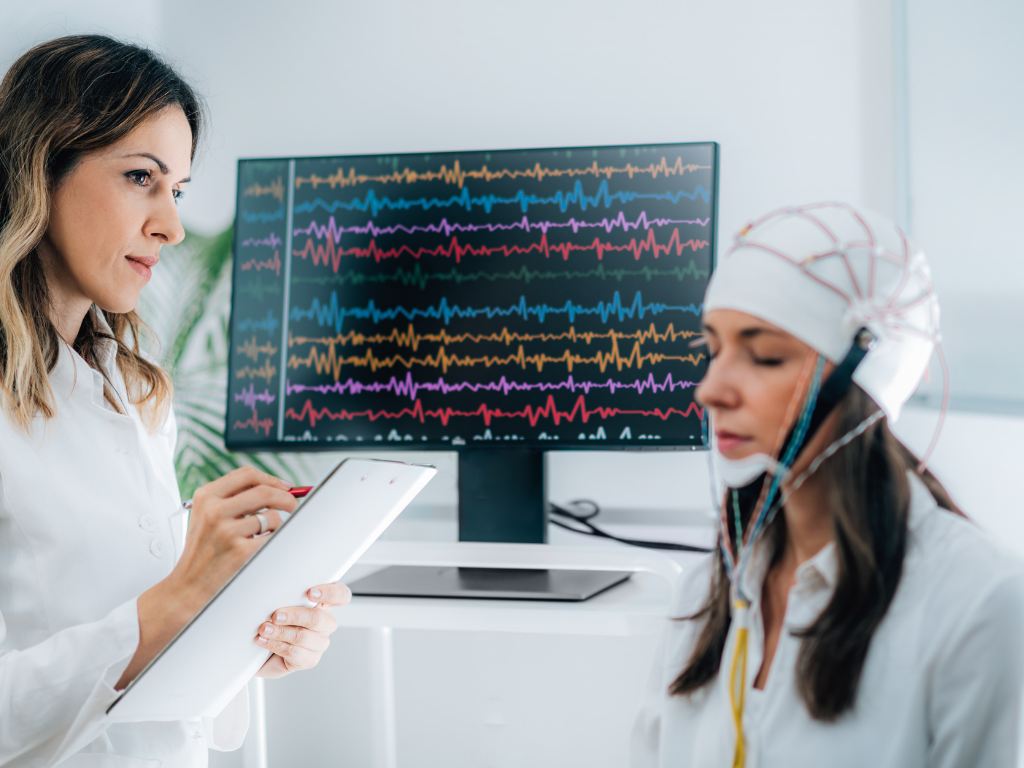
We help find the root cause of your issues.
What is a qEEG?
QEEG, or often referred to as a brain map, stands for quantitative electroencephalography. It is done by using 19 EEG channels that are sewn into a cap, that looks like a swimmers cap. Each electrode only picks up information and is one directional, meaning nothing is done to your brain. One of the ways your brain communicates to other areas is through electoral impulses created by the neurons. We use the sensors to pick up these electrical impulses and see how your brain is performing.
This is often something that is overlooked. If you went to a heart doctor, you would expect them to look at your heart before determining the next steps. Here we are doing the same thing. This is not done to diagnose, but to figure out the next steps for training and creating the best training program for your personal brain. Sometimes when we look at a qEEG we realize we need to send someone to a sleep lab or a neurologist for further studies if we see anything that stands out, such as falling asleep too quickly or epileptic form discharges. These are not things to be afraid of, but points out other issues that may be underlying, such as sleep apnea.
Studies have shown that a person’s qEEG stays stable over time unless something interrupts that, whether that is a concussion or an intervention to train it. By creating a baseline, we can track the progress of training and adjust the training as the brain improves.
How can this be used?
As you can imagine, there is a long list of how a qEEG can be used. At Elite Physiology the main way we use it is to develop a training program for clients based on their individual goals. For example, if we see slow waves in the front, over the executive network, we would likely want to train them down so the person doesn’t feel as spacey or trouble concentrating. But, if a person was fine here, there would be no reason to down train slow waves in that location. A qEEG lets us see how different areas of the brain are functioning and communicating together. This is helping a person reach peak performance by removing areas of obstruction and increasing production of areas they want.
What does getting a qEEG look like?
A person will arrive, sit down and have the 19 spots on their head prepared with an alcohol wipe, a mild scrub to remove oils, then the cap will be placed on them. A gel will be used to fill the cups in each sensor. Finally, ear clips will be added with a paste as well. A person then sits in a chair for 10 minutes, then the final 10 minutes (20 minutes total) is done with the client sitting with their eyes closed, while staying awake. After this, all the data has been gathered and gel will be removed from your hair, although it is advised to bring a cap or hair tie after, as your hair will be messier than you came in. But, don’t worry, this is only for the assessment and the training will clean out all pastes after each session.



